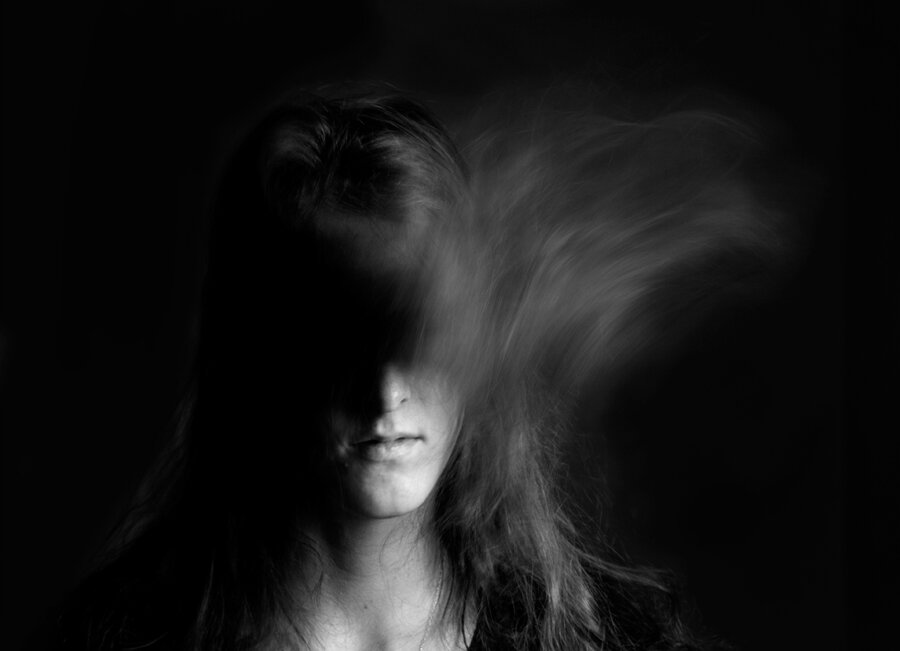Ghost Explores Encounters From Beyond the Physical World
All Images By . Used with Permission.As many developing young adults do, Sydney Wilson heard ghost stories growing up. Stories are one thing, but firsthand accounts, those are something entirely more fascinating. While a sophomore in college Ms. Wilson heard some chilling firsthand accounts and it inspired her to center a project around it. “My photographs are meant to make the viewer think about what it would be like to encounter or even be someone who is stuck between the physical world and whatever lies beyond.” She says of Ghost, her chilling series based on those firsthand ghost stories.

Ghost was born out of Ms. Wilson’s questions regarding an afterlife and the existence of a soul. Using a medium like photography can help both photographer and viewer delve into these complex existential issues. She was also heavily inspired by a roommate she had in college who shared many personal experiences of her own haunted house. “She grew up in Long Island, NY and used to tell us all these stories about how her house was haunted.” Ms. Wilson says.
To this day, Ms. Wilson confirms that she is still scared of her roommate’s home in Long Island, NY and more specifically the guest room where all of the experiences are said to have occurred. A chill here, a shiver there — Wilson prefers to just stay away from the location all together, citing her fear of the paranormal in general.

Interestingly enough, Ms. Wilson chose black and white as her medium in large part due to its influence on her as a photographer from her very beginnings. “Black and white photography was my first real introduction into the medium, working in a dark room and learning how to expose light sensitive paper was a crucial part to my falling in love with it.” Ms. Wilson says,” There is something so pure about it, how the different tones of grays can bring out subtitles that would be lost in a color photograph.”
Like many other black and white photographers, Ms. Wilson draws inspiration from light. She pays special attention to how light interacts with her subject or the absence of light creates forms with contrasting shadows. When a beautiful or compelling subject presents itself, the photographer in her is drawn to capture it.

The entire series helped Ms. Wilson not only to ponder the existence of life after death but also to harness her fear and turn it more to curiously and intrigue. Some of the images in the series depict a model surrounded by ghostly figures. To create the spectral images in the series, Ms. Wilson employed long exposure, mostly varying between five and ten seconds per image. She instructed her models based on how she believed a ghost would move through the frame.
All the images are meant to flow together in a sort of disconnected narrative, without there being one real cornerstone piece or ‘hero’ shot. She wanted the images of the ghostly figures to set the stage and tell the story of the series. You will also notice some tight shots on body parts sprinkled throughout the series, those close up images of body parts are meant to provide the viewer’s insight into the visceral and sometimes violent reactions that the human body experiences in response to fear. Ms. Wilson also felt the body parts provided a good break in the series from the ghostly images, giving the viewers time to collect themselves and process the images they had seen up to that point.

As far as what she used to create the series, Ms. Wilson noted her use of a Canon 60D in addition to a “rickety old tripod and omni hot lights.” Thereby again proving that you don’t need the best gear in the world to produce quality photography, the key to the process is in the artistic vision and creative prowess of the individual photographer, not their pixel count or focusing from 0 to 60 in .0003 seconds. Her angle on post-production echoed that of her gear list, that is, it was simple and had a point.
Ms. Wilson explained that she didn’t spend much time in post-production. She employed Photoshop mainly to add contrast and deepen the shadows or to eliminate cluttering details. She estimated that each image was only edited for ten minutes to an hour before reaching the final version. In total, the series took her about three months to complete.

Ghost was a creative series for Ms. Wilson, who also notes that she used it as a way to harness her fear of the paranormal. “[It] turned my fear of the possibility of the paranormal into a curiosity more than anything else,” she says of the project now.
In the end, Ms. Wilson has found that the series reaffirmed her love of black and white and its importance to the industry as a whole. “Black and white photography will always be a part of our medium, there is no escaping it.” She says before noting the importance of not just viewing black and white, but understanding it, and learning to use it to elevate your creativity and your photography as a whole. “It is where we got our beginnings and you have to understand the history of what came before you in order to move forward.“




